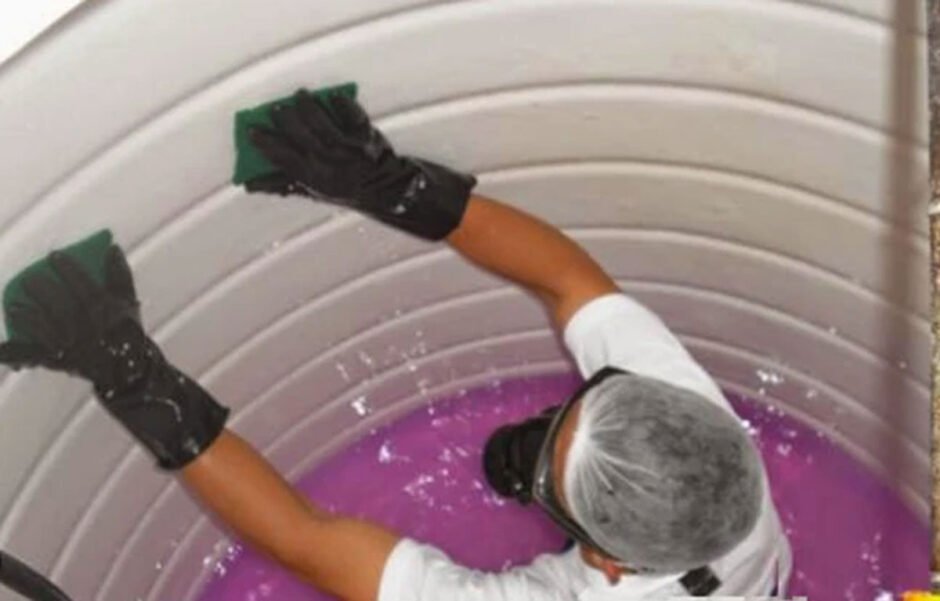In large-scale industrial or commercial settings, neglected storage tanks are more than just an oversight — they’re a risk. Facility operators who assume a tank can go without maintenance are exposing themselves to unplanned shutdowns, regulatory fines, and major financial losses. That’s where professional industrial tank cleaning services come into play — not as a convenience, but as an operational necessity.
Why commercial facilities can’t skip cleaning
Unlike small residential tanks, commercial or industrial storage systems handle large volumes of liquids or chemicals under demanding conditions. Sediment, sludge, or contamination builds up over time. What might be minor for a homeowner becomes a major hazard in commercial operations: process interference, cross-contamination, compliance issues, or decreased throughput.
If a facility skips routine cleaning, the residue inside the tank can degrade product quality or clog feeding systems. Over time, sediment can cause overpressure events or hamper temperature control systems. Missing just one cleaning cycle can lead to cascading consequences across the the entire process chain.
The role of industrial tank cleaning services
Specialised contractors offering industrial tank cleaning services know what to look for: corrosive residues, scale buildup, sludge, microbial contamination, and hazardous by-products. In commercial settings, cleaning workflows must follow strict protocols: confined space entry, hazardous materials handling, inertization, and disposal according to environmental and safety regulations.
These service providers also inspect for structural faults while cleaning: cracks, weld failures, liner damage, and signs of corrosion. Spotting these early prevents tank failures that could trigger production downtime or regulatory investigations.
Preventing operational downtime
Commercial sites depend on uptime. Tanks feed production lines, fuel systems, heating systems, or chemical reactors. If a tank is contaminated or structurally compromised, it can force a shutdown. Using routine industrial tank cleaning services prevents unplanned downtime. Cleaning removes contaminants and ensures internal surfaces are intact, enabling safe operation at full capacity.
A clean tank also ensures that feeding systems are not clogged, that pumps operate efficiently, and that product quality remains consistent. That helps protect the bottom line, reduce waste, and avoid rework or rejects.
Compliance and regulatory risk
Industrial storage tanks are subject to a variety of regulations: environmental, fire safety, hazardous substances, waste disposal, and inspection requirements. Inspectors often require records showing that cleaning has been performed at specified intervals. Failure can lead to fines or halts in operation.
By engaging certified providers of industrial tank cleaning services, commercial operators maintain documentation and evidence that tanks have been cleaned according to industry standards. That supports compliance audits, helps pass inspections, and reduces liability exposure.
Safety, employee protection, and environmental responsibility
Large tanks often store hazardous or flammable materials. Residues can release vapors, generate explosive atmospheres, or corrode tank walls. Professional cleaning removes trapped gases or hazardous residues, reducing risk.
Industrial cleaning includes venting the tank, inerting the atmosphere, and using specialized equipment to remove sludge safely. Technicians follow confined-space protocols, use proper personal protective equipment (PPE), and manage waste as hazardous waste. That protects employees and the environment.
Cost savings over time
At first glance, skipping cleaning saves money — but only for a short time. Residue buildup reduces capacity, interferes with operations, and increases energy costs (e.g. heating or pumping thicker sludge).
Regular use of industrial tank cleaning services pays back by:
- maintaining tank capacity
- reducing maintenance and repair costs
- improving efficiency
- avoiding costly downtime and regulatory penalties
Over the long run, those savings can far exceed the cost of cleaning.
Early warning signs every facility manager should watch
Commercial operators should watch for these red flags:
- Unexpected resistance or reduced flow indicating buildup
- Unstable measurements (e.g. volume mismatches) or product inconsistencies
- Foul odors or signs of contamination
- Changes in pump or heating load
- Visual signs: sludge accumulation, discoloration, or sediment at bottom
When these appear, it’s time to call professionals specializing in industrial tank cleaning services.
Best practices to keep operations smooth
To avoid the costly mistake of skipping cleaning, here are best practices for commercial settings:
- Schedule periodic cleanings based on tank usage, product type, and residue accumulation rates.
- Maintain detailed logs of cleaning dates, methods, and waste disposal.
- Use third-party industrial tank cleaning services that follow safety and regulatory standards.
- Combine cleaning with structural inspections to detect corrosion or tank integrity issues.
- Plan for downtime windows and integrate cleaning into maintenance schedules to minimize disruption.
Conclusion: it’s not optional for commercial facilities
In residential context, skipping cleaning may be an inconvenience. In commercial or industrial operations, it’s a strategic risk. Unclean tanks compromise production, increase hazards, and can trigger regulatory enforcement.
Engaging expert industrial tank cleaning services ensures that storage tanks remain safe, compliant, and efficient. It’s not a matter of choice — it’s a requirement for continuous, smooth, and legal operations.










